UNESCO world heritage sites
- John&Jane Doe
- Nov 17, 2022
- 23 min read
Updated: Nov 18, 2022
UNESCO
United Nations Educational, Scientific and Cultural Organization is a special organisation that aims to protect world peace through international cooperation in culture, education, art and science. UNESCO was founded in 1945 and nowadays it has its headquarters at the World Heritage Centre in Paris. UNESCO mission, which was shaped by WWII, is to support peace, human rights and equal development. UNESCO achieves its goals through five major areas: education, natural sciences, human sciences, culture and communication. UNESCO sponsors projects that improve literacy, translate world literature, protect independent media and press freedom, preserve regional and cultural history and secure World Heritage Sites of cultural and natural importance.
WORLD HERITAGE SITES
Area under legal UNESCO protection. World Heritage Sites are chosen by UNESCO for having cultural, historical, scientific or other forms of significance. The sites are judged to contain "cultural and natural heritage around the world considered to be of outstanding value to humanity". Currently, there are 1154 objects on the World Heritage Sites List from the whole world.
CULTURAL
"To represent a masterpiece of human creative genius"
"To exhibit an important interchange of human values, over a span of time or within a cultural area of the world, on developments in architecture or technology, monumental arts, town-planning or landscape design"
"To bear a unique or at least exceptional testimony to a cultural tradition or to a civilization which is living or which has disappeared"
"To be an outstanding example of a type of building, architectural or technological ensemble or landscape which illustrates (a) significant stage(s) in human history"
"To be an outstanding example of a traditional human settlement, land-use, or sea-use which is representative of a culture (or cultures), or human interaction with the environment especially when it has become vulnerable under the impact of irreversible change"
"To be directly or tangibly associated with events or living traditions, with ideas, or with beliefs, with artistic and literary works of outstanding universal significance"
POLAND
Auschwitz Birkenau
Auschwitz Birkenau was inscribed on the World Heritage List in 1979, by virtue of the 6th Cultural Criterium. Nowadays, it is one of the most famous Holocaust symbols. Auschwitz Birkenau was the main of six concentration and extermination camps established by Nazi Germany, around 1940, to implement “Endlösung der Judenfrage” (English Final Solution to the Jewish Question). It was built in German- occupied Poland, initially as a concentration camp for Poles, the first transport of Poles reached Auschwitz in June 1940.
In 1942 Auschwitz Birkenau became the main extermination camp, where over million Jewish were tortured and killed only for their origin. It was also a place where tens of thousand Poles, Sinti, as well as prisoners from other European countries, were murdered for racial reasons. Now there is a very important museum and a memorial site.

Historical Centre of Kraków
The Historical Centre of Kraków was inscribed on the World Heritage List in 1978, by virtue of the 4th Cultural Criterium. Kraków was founded in 1257 and was the second capital of Poland. The importance of the city is evidenced by its original layout, numerous churches, monumental buildings, relics of medieval defensive walls, as well as palaces, townhouses and other remarkable monuments from various eras, preserved in their original forms.
The dominant part of the Old City is the Wawel Hill and it is a symbol of royal power. Another interesting powin is Kazimierz, which was shaped by the population of Catholics and Jews and their different cultures and customs. Krakow, one of the largest administrative and commercial centers in Central Europe, was a center of arts and crafts, a place where the culture and art of the West and the East met. The rank of the city as a cultural center of European importance is enhanced by the existence of one of the oldest universities of international renown - the Jagiellonian University.

Historical Center of Warsaw
The Historical Centre of Warsaw wasinscribed on the World Heritage List in 1980 by virtue of 2nd and 6th Cultural Criterium. During the Warsaw Uprising in 1944 more than 85% of historica Warsaw's center was destroyed by Nazis as a repression for resistance to the German occupation. The capital of Poland was reduced to ruins with the intention of seizing the centuries-old tradition. The reconstruction of the historical city was possible thanks to the determination of inhabitants and the help of the entire nation. The city was rebuilt as a symbol of elective authority and tolerance and a place where the first democratic European constitution, the Constitution of 3 May 1791, was adopted.
The reconstruction included holistic reconstruction of the urban plan with the Old Town, townhouses, city walls, the Royal Castle and the important religious buildings. Two main principles were followed when restoring a destroyed building: first, to use reliable archival documents, and second, to recreate the image of the historic city. The reconstruction concept was dependent on the availability of the detailed iconographic materials and historical documentation from that period. The rebuilding of the Old Town continued until the mid-1960s. The entire process was completed with the reconstruction of the Royal Castle (opened to visitors in 1984).
The Centennial Hall in Wrocław
The Centennial Hall (in Polish called "Hala Stulecia"), formerly People's Hall ("Hala Ludowa") is one of Poland's official national Historic Monuments, listed as a UNESCO World Heritage Site in 2006 by virtue of 1st, 2nd and 4th Cultural Criterium. It's a historical building located in Wrocław which was constructed according to the plans of architect Max Berg between 1911 and 1913 so during the time when the city was part of the German Empire. It was designed to serve as a multifunctional structure to host exhibitions, various sporting events, concerts and theatrical performances. The Centennial Hall is still being used for sporting events, business summits, and holding concerts.
Medieval Town of Toruń
Toruń is a historical city by the Vistula River in north-central Poland listed as a UNESCO World Heritage Site in 1997 by virtue of 2nd and 6th Cultural Criterium. Toruń is one of the oldest Polish cities - it was first settled in the 8th century. The city was famous for being a home for people of diverse backgrounds. For many years Toruń was part of the Hanseatic League. In the 17th century Toruń was a prosperous city and a leading trading point. At the beginning of the Modern period Toruń was one of Poland's four largest cities. After the partitions of Poland (1772, 1793 and 1795) the city became part of Prussia. Then Toruń became the temporary capital of the Duchy of Warsaw in 1809.
Later, it was returned to Prussia again, then it became a part of the German Empire and finally, after World War I, it became one of the Polish Republic’s cities. Toruń wasn’t destroyed during WWII so its old monuments can still be visited by tourists. One of the most important places in the city is definitely its famous Museum of Gingerbread - the gingerbread-baking tradition dates back nearly a millennium – as well as the Cathedral. Toruń is the hometown of Nicolaus Copernicus, an astronomer who formulated a model of the universe that placed the Sun rather than Earth at its center.
Kalwaria Zebrzydowska: the Mannerist Architectural and Park Landscape Complex and Pilgrimage Park
Kalwaria Zebrzydowska is a small city in southern Poland which has a cultural landscape listed as a UNESCO World Heritage Site in 1999 by virtue of 2nd and 4th Cultural Criterium. It’s the center of the pilgrimage movement to the Passion and Marian Sanctuary of the Bernardine Fathers.

Wieliczka and Bochnia Royal Salt Mines
The Wieliczka Royal Salt Mine wasinscribed on the World Heritage List in 1978 and in 2013 extended to Bochnia Royal Salt Mine and Żupny Castle in Wieliczka, by virtue of 4th Cultural Criterium. The Wieliczka and Bochnia salt mines are located on the same geological rock salt deposit in southern Poland. Situated close to each other were worked in parallel and continuously from the 13th century until the late 20th century, creating one of the earliest and most important European industrial institutions. The two mines, which over a long period were combined as one company with royal status (Kraków Saltworks), were administratively and technically run from Żupny Castle in Wieliczka, which dates from the medieval period.
Both mines include a huge set of early galleries that extended to considerable depths (about 400 meters below the ground). The exploited grounds were transformed into chapels, workshops, warehouses, etc. A significant ground of sculptures and decorative elements carved in rock salt has been preserved in both mines along with a collection of tools and machines. The underground tourist trails have existed since the beginning of the 19th century.
Wooden Churches of Southern Małopolska
Wooden Churches of Southern Małopolska were inscribed on the World Heritage List in 2003 by virtue of 3rd and 4th Cultural Criterium. The Wooden Churches of Southern Małopolska are a serial inscription of the six best preserved and oldest wooden Gothic Churches characteristic of this region. They are located in the following towns and villages: Blizne, Binarowa, Dębno Podhalańskie, Haczów, Lipnica Murowana and Sękowa. The churches are a unique example of the traditional wooden building of medieval churches in Roman Catholic culture.
Muskauer Park - Park Mużakowski
The Muskauer Park was inscribed on the World Heritage List in 2004 by virtue of 1st and 4th Cultural Criterium. A landscaped park of 559.9 ha in the Nysa-Łużycka valley and on the border between Poland and Germany. It was created by Prince Hermann von von Pückler-Muskau from 1815 to 1844. The Park blends seamlessly with the surrounding agricultural landscape, the park implements a new approach to landscape design and influences the development of the landscape architecture in Europe and America.
The extensive area includes the River Neissa, other water features (human-made and natural), bridges, buildings, forest areas and paths. It is an example of a cultural landscape in which the values of nature have been used with the greatest skill. Pückler combined
human-made architectural elements with natural elements, including the terrain’s geological features. Park features with its extraordinary simplicity and spatiality.
Old City of Zamość
The Old City of Zamość was inscribed on the World Heritage List in 1992 by virtue of 4th Cultural Criterium. Zamość was founded in the 16th century by Jan Zamoyski on the trade route linking western and northern Europe with Black Sea. The Old City of Zamość is an unique example of Renaissance city in Central Europe, modelled on Italian theories of the “ideal city” and built by the architect Bernando Morando. The city plan by Bernard Morand combined the functions of an urban complex, a residential palace and a fortress, all in accordance with Renaissance concepts.

Wooden Tserkvas of the Carpathian Region in Poland and Ukraine
The Wooden Tservas were inscribed on the World Heritage list in 2013 by virtue of 3rd and 4th Cultural, Criterium. Sixteen wooden tserkvas (churches) are situated in the estern part of Central Europe, in the Polish and Ukraine Carpathian region.
They are unique examples of the tradition of wooden Orthodox religious architecture, which was widespread in Slavic countries, and which has survived to this day. Integral parts of tserkvas are iconostasis screens, interior polychrome decorations and other historical furnishings. Important elements of tserkvas are wooden bell towers, churchyards, gatehouses and graveyards.
Castle of the Teutonic Order in Malbork
The Castle of the Teutonic Order in Malbork was listed as a UNESCO World Heritage Site in 1997 by virtue of 2nd,3rd and 4th Cultural Criterium. It’s the largest castle in the world measured by land area. The castle was successively built from 1280 to the mid-fifteenth century by the Teutonic Knights, in the form of an Ordensburg fortress. They called it “Marienburg” - in honour of Mary, mother of Jesus Christ. The castle in Malbork was severely damaged during WWII but was once again restored soon after.
Krzemionki Prehistoric Striped Flint Mining Region
Krzemionki Prehistoric Striped Flint Mining Region is located in Góry Świętokrzyskie, the oldest (geologically) mountain region in Poland. It was listed as a UNESCO World Heritage Site in 2019 by virtue of 3rd and 4th Cultural Criterium. Krzemionki is an ensemble of four mining sites, dating from the Neolithic to the Bronze Age, dedicated to the extraction and processing of striped flint. Because of many important discoveries from this place, we were able to learn more about the life of our prehistoric ancestors.
Churches of Peace in Jawor and Świdnica
The Churches of Peace in Jawor and Świdnica are the largest timber-framed religious buildings in Europe. They were listed as a UNESCO World Heritage Site in 2001 by virtue of 3rd, 4th and 6th Cultural Criterium. Those churches were built in the former Silesia in the mid-17th century, following the Peace of Westphalia. It was then that the Catholic Emperor Ferdinand III Habsburg granted the Silesian Lutherans the right to build Churches of Peace.
Tarnowskie Góry Lead-Silver-Zinc Mine and its Underground Water Management System
This place is located in Upper Silesia, southern Poland. It’s one of the main mining areas of central Europe, listed as a UNESCO World Heritage Site in 2017 by virtue of 1st, 2nd and 4th Cultural Criterium. The property includes the entire underground mine with adits, shafts, galleries and other features of the water management system. Tarnowskie Góry represents a significant contribution to the global production of lead and zinc.
Ancient and Primeval Beech Forests of the Carpathians and Other Regions of Europe
This transnational property includes 94 component parts in 18 countries. It was listed as a UNESCO World Heritage Site in 2015 by virtue of 9th Natural Criterium. Since the end of the last Ice Age, European Beech has spread over a period of a few thousand years in a process that is still ongoing. Those trees were able to spread their occurrence so widely mostly due to their high tolerance of climate changes.

Białowieża Forest
The Białowieża Forest is a complex of primary forests consisting of both coniferous and broadleaved trees on the border between Poland and Belarus, listed as a UNESCO World Heritage Site in 1979 by virtue of 9th and 10th Natural Criterium. Białowieża Forest is the home to the largest population of the European bison, the biggest and heaviest European land mammal.
BULGARIA
madara rider
The Madara Rider or Madara Horseman is an early medieval large rock relief carved on the Madara Plateau east of Shumen in northeastern Bulgaria, near the village of Madara. The monument is dated in the very late 7th, or more often very early 8th century, during the reign of Bulgar Khan Tervel. In 1979 became enlisted on the UNESCO World Heritage List. The relief depicts a majestic horseman 23 m (75 ft) above ground level in an almost vertical 100 m (328 ft)-high cliff. It is of almost natural size. The horseman, facing right, is thrusting a spear into a lion lying at his horse's feet, and on the left a dog is running after the horseman. The carving of the horseman's halo and garments, as well as the bird in front of the horseman's face, are barely recognizable due to the erosion and bad condition of the monument. The relief is similar to the carbon images found in Saltovo, Soulek, Pliska and Veliki Preslav.

Madara rider - the original tradition
The meaning and symbolism of the depiction is uncertain, as well its actual masonry tradition and cultural source. In the scholarship the origin of the relief is connected with the Bulgars ethnogenesis – the semi-nomadic equestrian warrior culture from the Eurasian Steppe. Others saw in the relief resemblance to the Sasanian rock relief tradition. The hero-horseman is a common character of Turkic and Iranian-Alanic mythology. It is sometime considered that the horseman represents or is related to the Bulgar deity Tangra, while Vladimir Toporov related it to the Iranian deity Mithra.
Others noted a more simple explanation – that the relief represented Khan Tervel (701–718 AD), or like previously considered and now rejected, Khan Krum (802–814 AD). Some considered it an example of the Thracian horseman – a recurring motif of a deity in the form of a horseman in the Paleo-Balkanic mythology. The motif typically features a caped horseman astride a steed, with a spear poised in his right hand. He is often depicted as slaying a beast with a spear, although this feature is sometime absent. Initially considered (and later abandoned) by Konstantin Josef Jireček and Karel Škorpil, the assumption was gradually rejected because of differences in the iconographic details, and the relation with the animals. The relief probably incorporates both autochthonous Thracian and the newly arrived Bulgars cultural cults. The monumental size, iconography and the details (stirrup, halo, skull-cup, bird etc.) is generally part of the Bulgar tradition, while the rightward direction and the lion of the Thracian tradition.

Madara rider - archaeology
In the 1924–35, beneath the relief (some 250 m north) were found the remnants of a complex which is considered to have been a pagan shrine (three-aisled church) and a rectangular building, probably the ruler's private dwelling, where the ruler did sacral rituals related to Tangra. At the site was also found a damaged inscription by Khan Omurtag which mentions the deity Tangra. Throughout the 20th century, two miles (c. 3.2 km) northeast from the relief was found another group of buildings, consisting of 5th-6th century basilica, with inner rectangular structure, which some interpreted as the pagan temple.

sreburna nature reserve
The Srebarna Nature Reserve is a freshwater lake adjacent to the Danube and extending over 600 ha. It is the breeding ground of almost 100 species of birds, many of which are rare or endangered. Some 80 other bird species migrate and seek refuge there every winter. Among the most interesting bird species are:

It comprises Lake Srebarna and its surroundings and is an important wetland located on the Via Pontica, a bird migration route between Europe and Africa. It provides nesting grounds for 99 species of birds and seasonal habitat to around 80 species of migratory birds. The property is surrounded by hills which provide a natural boundary and offer an ideal means for observing the waterfowl.
Srebarna Nature Reserve protects an important example of a type of wetland that was widespread in Bulgaria in the past. It shelters a diversity of plant and animal species, which are increasingly threatened. The wetland is an important breeding, staging and wintering site for a large number of birds. Floating reedbed islands and flooded willow woodlands provide important bird breeding areas.

The area was proclaimed a nature reserve in 1948 and is a Ramsar site since 1975. Srebarna Lake was the first wetland in Bulgaria to receive legal protection status and also the first to achieve international recognition. Management and control are carried out by the Ministry of Environment and Water and its regional departments. The reserve was recognized as World Natural Heritage Site under the 1972 Convention for the Protection of the World Cultural and Natural Heritage and included in the UNESCO World Heritage List in 1983. In 1989 the lake was designated as an lmportant Bird Area by BirdLife International. Its values are also recognised and protected at the European level. The property is also included in two Natura 2000 sites: the Srebarna Special Protection Area and Ludogorie-Srebarna Special Area of Conservation.

In total the property provides critical habitat that supports 39 mammal, 21 reptile and amphibian and 10 fish species, inhabit the reserve 173 bird species, 78 species of which are of European conservation concern, and nine being listed as globally threatened. There are hydrophyte species such as reed in and around the lake. The reserve is home to 139 plant species, 11 of them are in danger of extinction outside the territory of Srebarna.
The property includes the largest lake left after drainage of the marshy zone along the Danube and was connected to the river until a dyke was built in 1949. Its current situation is therefore not completely natural and is maintained by water management measures. The Reserve is a strictly protected area, and only carefully-controlled scientific research, and conservation management activities are allowed to take place within it. The reserve embraces 6 km2 of protected area and a buffer zone of 5.4 km2. The aim of this buffer zone is to prevent and reduce negative human impacts on the reserve. There is a museum constructed, where a collection of stuffed species typical for the reserve is arranged.

There are several legends about the origin of the lake's name. The one is about a khan named Srebrist, who died in the neighbourhood whilst engaging in an unequal battle with the Pechenegs. A second one tells about a boat full of silver (srebro in Bulgarian) along the shores of the lake. According to a third one, which is regarded as most plausible, the name comes from the silvery reflections on the lake's surface during full moon.
sveshatari tomb
Sveshtari Tomb is located innortheastern Bulgaria,Razrgradregion,42km northeast of Razgrad. It is UNESCO World Heritage Sites and is among the HUNDRED National Tourist Sites. It was discovered in 1982 during the excavations of the high Gina mound near the village. This is a royal tomb in which the Gothic ruler Dromichet is probably buried. It is built of smoothly worked stone blocks of soft limestone.
The Sveshtari tomb consists of a corridor and three square chambers:anentrance hall,a side room and a burial chamber covered with semi-cylindrical vault. The entrance is decorated with columns with lonic capitals ,and above them lies a plate with a relief frieze of stylized ox heads,rosettes and garlands. The walls of the burial chamber are shaped like a colonnade with columns attached to the wall. Gifts and sacrifices were probably placed at the entrance to the room.
Everything made of precious metals has been looted since ancient times. The treasures locked in the tomb are evidenced by the discovered bones of five horses carved here to accompany their master to the afterlife. Two stones beds,human bones and burial gifts were found in the burial chamber.
Next to one of the beds is a sculptural of a small temple. The excavated tomb near Sveshtari is not isolated. Along 2km there 26 mounds of different sizes. The whole areas has been declared an archeological reserve. The visit to the tomb is paid.
ITALY
CRESPI
The Villaggio Crespi d'Adda (Crespi Workers' Village) is an entire town, built from nothing by the owner of the factory for his workers and their families. The workers were given homes with gardens and vegetable gardens and all basic services. In this perfect little world the master of Crespi "reigned" from his castle and, like a caring father, took care of the needs of his employees: inside and outside the factory and "from the crib to the grave", predating any official state welfare legislations. Only those who worked in the factory could live in the Village, and the life of every citizen was strictly connected to the factory, its rhythms and its demands.
PREHISTORIC PILE DWELLINGS
The Venetian walls of Bergamo are a well preserved and imposing architectural building dating back to the sixteenth century. The walls are interrupted by 4 doors: Sant'Agostino, San Giacomo, Sant'Alessandro and San Lorenzo. They have been part of the UNESCO World Heritage Site list since July 9, 2017.
The prehistoric pile-dwellings around the Alps were enrolled in the Unesco World Heritage List in 2011. In Italy we have 19 recognized sites distributed in 5 regions, 10 located in Lombardy. These settlements allow an understanding of a unique prehistoric cultural phenomenon. They have also provided an insight into the technological and typological structure of the housing system which relates to a period that goes from the Neolithic (6th millennium BC) to the Iron Age.
THE LAST SUPPER
The Last Supper is a wall painting created by Leonardo Da Vinci, who abandoned the method of the fresco painting and used a different technique which requires speed in the application of the color on a still damp plaster.For this painting Leonardo decided to apply the color directly on the dry plaster, in order to be able to go back several times to take care of the details of the work.

ROCK ENGRAVINGS
The rock engravings in Valle Camonica boast the record of being the first Italiansite to be recognised as a UNESCO World Heritage Site. It was in 1979 that the examples of rock art found in the nearby Brescia were added to the UNESCO World Heritage List.

MANTUA AND SABBIONETA
Cremona is famous for the three T's, in the local dialect "turòon, turàs, tetàs", but since 2012 it has gained a much more prestigious recognition: the traditional violin craftsmanship of Cremona has been registered in the Intangible Cultural Heritage of Humanity on December 5, 2012.

BERNINA EXPRESS
The Rhaetian Railway, which winds through thebeautiful landscape of Albula / Bernina, bringstogether two historic railway lines that cross theSwiss Alps through two passes. Opened in 1904, the Albula line in the north western part is 67 km long and consists of aremarkable set of structures, including 42 tunnelsand covered galleries and 144 viaducts andbridges. While the Bernina Pass line is 61 kmlong and has 13 tunnels and tunnels and 52viaducts and bridges.

lithuania
Lithuanian cross making
Lithuanian cross making - the making of traditional Lithuanian crosses, a branch of Lithuanian folk art, which in 2001 was included in the UNESCO list of the Intangible cultural Heritage.Cross making is related to some traditions they are built as monuments for the dead or as spiritual protection symbols, trying to ask for help or thank for it. Crosses were also built in Lithuania at a time when the Russian Empire (in the second half of the 19th century) and the Soviet Union (in the 1980s and 1980s) forbade their construction or indicated how much and where to build them. Therefore, at the end of 19th century these monuments acquired the status of a national symbol in addition to their religious significance.
Baltic song festivals
The Baltic song festivals (Lithuanian: dainų šventė) Are traditional amateur song and dance festivals in the Baltic states. The first song festival was held in Zürich, Switzerland in June 1843. It was attended by 2,184 singers. The tradition spread to Würzburg, Germany in 1845 and from there it reached the Baltic states via Baltic Germans and their choral societies. Firstly, it was held in 1869 in Estonia (Estonian Song Festival), and in 1873 in Latvia (Latvian Song and Dance Festival). Lastly the tradition came to the Lithuania (Lithuanian Song Festival) in 1924.

These festivals are massive events attracting some 30,000 singers. The festivals, held every five years in Estonia and Latvia and every four years in Lithuania, celebrate traditional folk songs and dances. During the Soviet era, the festivals were a subtle political protest against communism. In the late 1980s, songs became an integral part of the independence movement, sometimes known as the Singing Revolution. In 2014, the Estonian Song Festival attracted a total of 159 300 people. This was the largest figure since Estonian re-independence.

Polyphonic Lithuanian folk songs
Lithuanian “Sutartinės” are performed by singing, dancing, or just instruments. When singing, it was often danced in calm, consistent movements. They also played “Sutartinės” with musical instruments like: “skudučiai, lumzdelis, daudytčiai, kanklės”. These songs have been sung on various occasions and are common to all genres: war, wedding, calendar cycle and others.“Sutartinės” as the hymns of the old faith began to fade with the adoption of Christianity, especially in the nineteenth and twentieth centuries. The living tradition has disappeared, but folklore ensembles are still singing them to this day.
Vilnius old town
The old town of Vilnius is one of the largest surviving medieval old towns in Northern Europe, has an area of 3.59 square kilometres (887 acres). It encompasses 74 quarters, with 70 streets and lanes numbering 1487 buildings with a total floor area of 1,497,000 square meters. The oldest part of the Lithuanian capital of Vilnius, it has developed over the course of many centuries, and has been shaped by the city's history and a constantly changing cultural influence. It is a place where some of Europe's greatest architectural styles—gothic, renaissance, baroque and neoclassical—stand side by side and complement each other.

Kernavės archaeological site
Kernavės archaeological site is an authentic proof 10000 years old development of Baltic sea settlements. In this site there are a lot of very important evidence of old pagan and Christian burying traditions.Also, this site has mounds(Lt. Piliakalnis) and settlement plans which are authentic examples of that type structures in pre Christian period.

The Curonian spit
Curonian spit is a peninsula with sand dunes dividing the Baltic sea from the Curonian Lagoon. Curonian spit is a protected territory in which there is established the natonial park of curonian spit.

The Struve Arc
The Struve Arc is a chain of survey triangulations stretching from Hammerfest in Norway to the Black Sea, through 10 countries and over 2,820 km. These are points of a survey, carried out between 1816 and 1855 by the astronomer Friedrich Georg Wilhelm Struve, which represented the first accurate measuring of a long segment of a meridian.
This helped to establish the exact size and shape of the planet and marked an important step in the development of earth sciences and topographic mapping. It is an extraordinary example of scientific collaboration among scientists from different countries, and of collaboration between monarchs for a scientific cause. The original arc consisted of 258 main triangles with 265 main station points. The listed site includes 34 of the original station points, with different markings, i.e. a drilled hole in rock, iron cross, cairns, or built obelisks.

greece
Medieval City of Rhodes
Rhodes, the largest island of the Dodecanese, boasts an impressive medieval city at the heart of its capital.The medieval city is situated within a 4 km long wall.It is divided with the high town to the north and the lower town southwest.It is one of the best-preserved medieval towns in Europe. Its imposing architecture is testimony to a rich heritage and to the events that have marked its history.Furthermore it has been part of the UNESCO World Heritage List since 1988.
MOUNT ATHOS
Mount Athos -commonly known as the Holy Mountain- is the spiritual capital of the Orthodox Christian world, consisting of 20 monasteries, 12 skites, and about 700 houses, cells or hermitages and approximately 2,000 monks. The “Garden of Virgin Mary” is the paradise of the eastern peninsula of Halkidiki! The Monastic State of the Holy Mountain is known to be the main carrier of Orthodox Christianity and holds spiritual glory and great history. It is a religious community with 1.000 years old monasteries, cells in caves or between the rocks, towers, domes, belfries, chants, etc. It is listed in UNESCO’s WORLD HERITAGE MONUMENTS.

Tradition indicates that Virgin Mary and John the Evangelist encountered a stormy sea, on their way to visit Lazarus in Cyprus and they were forced to seek a shelter in a port, which is now the Holy Monastery of Ivira. The Virgin Mary, admired the wild beauty of the place and asked God to give her the mountain as a present. Then our Lord responded: “Let this place be your lot, your garden and your paradise, as well as a salvation, a heaven for those who seek salvation”. Since then, Mount Athos is called "The Garden of the Virgin Mary". The first monks arrived in Mount Athos during the 5th century AD, looking for a secluded place to worship God and find their peace on Earth. Even though women are not allowed inside Mount Athos, all visitors (men and women) can admire the magnificent monasteries by cruising along the west coast of Athos peninsula.
The Temple of Apolllo Epicurius at Bassae
Located in the Peloponnese,this temple was built at the height of the Greek civilization in the second half of the 5th century BC (420-400 BC). It was dedicated to Apollo Epicurius by the Phigaleians (ancient Arcadian citizens), who believed the god of sun and healing had protected them from plague and invasion.
The Old town of Corfu
The Old Town of Corfu, on the Island of Corfu off the western coast Greece, is located in a strategic position at the entrance of the Adriatic Sea, and has its roots in the 8th century BC and was added to the list of UNESCO World Heritage sites in 2007. Corfu is known as Greece's “emerald island” because is one of the greenest islands in Greece. There are more than 2 million olive trees on the island of Corfu adding to its lushness.

The Old town of Philippi
The ancient town of Philippi, considered one of the most significant archaeological sites in East Macedonia, lays on the borders of the marshes that cover southeast part of Drama plain. It was founded in 360 B.C. King Philip II, aware of economic and strategic potential of this place, marched on to conquer, fortify and name the city after himself. Hellenic Philippi had a fort, a theater, few public houses and private homes. The building of Via Egnatia road through the city, in II century B.C., made Philippi an important regional center.

METEORA
The Meteora (meaning "lofty", "elevated") is a unique rock formation in central Greece hosting one of the largest and most precipitously built complexes of Eastern Orthodoxmonasteries, second in importance only to Mount Athos. The six (of an original twenty-four) monasteries are built on immense pillars and hill-like rounded boulders that dominate the local area. It is located near the town of Kalabaka at the northwestern edge of the Plain of Thessaly near the Pineios river and Pindus Mountains. Meteora was included on the UNESCO World Heritage List in 1988.
Paleochristian and Byzantine Monuments of Thessaloniki
Thessaloniki was founded in 315BC and is the second largest city in Greece and the capital of the Macedonia region. It has always been a multicultural city that a prosperous yet tumultuous history from the Roman era to the Ottoman era and was the apple of contention between many surrounding nations.
Visiting Thessaloniki, is just like walking around an open-air museum because its long history comes alive in front of your eyes in every corner. The city was one of the first bases for the spread of Christianity, and there are lots of Early Christian churches, Byzantine and Roman religious monuments and 15 of these monumentswere listed asUNESCO World Heritage sites in 1988.
The Historic Centre (Chorá) with the Monastery of Saint-John the Theologian and the Cave of the Apocalypse on the Island of Pátmos
The island of Patmos is said to be the place where St. John the Theologian wrote his Gospel and the Book of Revelation. The main town (Chora) has lots of important religious buildings worth visiting, as well as a monastery built in the 10th century and dedicated to Saint John. Both the Monastery and the Cave, along with the rest of the historic centre of the island’s Chora (main town) have been declared a joint World Heritage Site by UNESCO in 1999 as an "exceptional example of a traditional Greek Orthodox pilgrimage centre of outstanding architectural interest".

Archaeological Site of Olympia
Olympia was dedicated to the God Zeus and was a major athletic and religious centre. It’s where the ancient Olympic Games took place, the birthplace of the most famous and important sporting event in the ancient world. Construction here has spanned a number of different periods – several buildings, including the first stadium, were built in the Archaic period. Here you will find incredible sculptures such as the decoration of the temple of Zeus, as well as the famous Hermes of Praxiteles and the statue of Nike of Paionios.It was added to the list of UNESCO World Heritage sites in 1989.
Archaeological Site of Delphi
The pan-Hellenic sanctuary of Delphi, where the oracle of Apollo spoke through the mouth of Pytheia, passing on divine messages to the leaders of ancient Greece.It was the site of the omphalos, the 'navel of the world', according to ancient Greeks. It lies at the foot of Mount Parnassus, blending harmoniously with the superb landscape and charged with sacred meaning.
Delphi in the 6th century B.C. was indeed the religious centre and symbol of unity of the ancient Greek world. There are a number of buildings still standing, including a theatre, hippodrome and stadium. Not only that, but there’s also the Temple of Apollo and the Stoa of the Athenians. It was listed as Unesco World Heritage site in 1987.
Acropolis of Athens
The Acropolis of Athens ( the world derives from the Greek words ἄκρον (akron, "highest point, extremity") and πόλις (polis, "city"), is an ancient citadel located on a rocky hill above the city of Athens and contains the remains of several ancient buildings of great architectural and historical significance, including the Erechtheion, Temple of Athena Nika, and Propylaea, the most famous of them all being the Parthenon. These buildings have influenced architecture across the globe for centuries and are universal symbols of the classical spirit and civilization and form the greatest architectural and artistic complex bequeathed by Greek Antiquity to the world.
The ancient city was built back in 2,500 BC, in the second half of the fifth century BC, following the victory against the Persians and the establishment of democracy. In the following period, the arts flourished, and exceptional artists put into effect the plans of Pericles and, under the guidance of the sculptor Pheidias, transformed the rocky hill into a unique monument of thought and the arts. The Acropolis of Athens was one of the earliest additions to Greece’s UNESCO World Heritage list back in 1988.








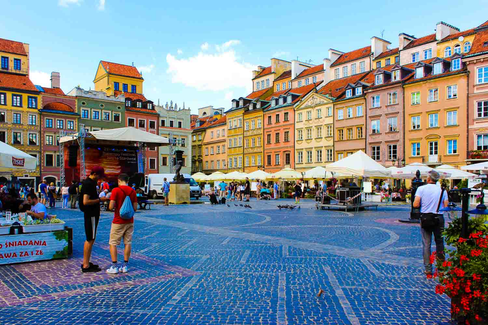







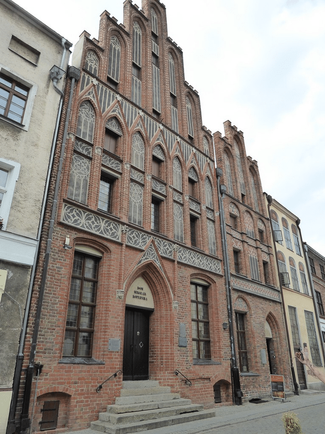

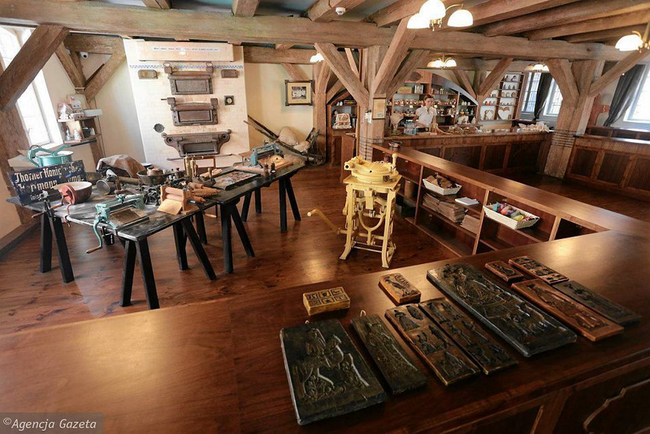

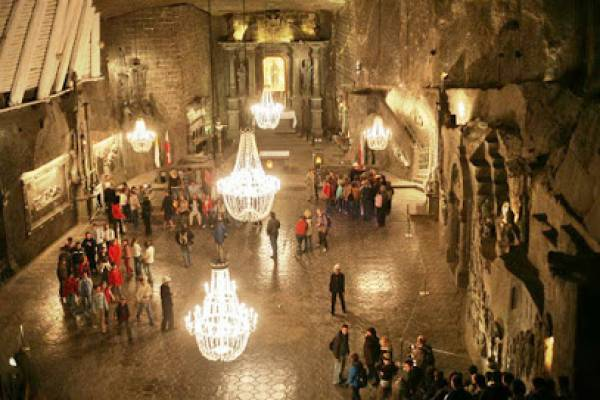



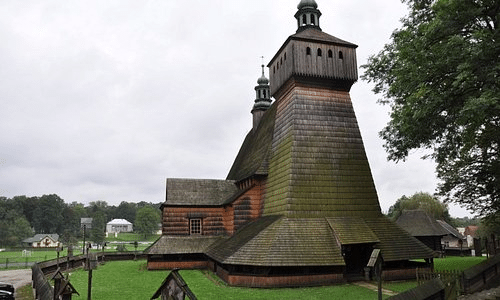

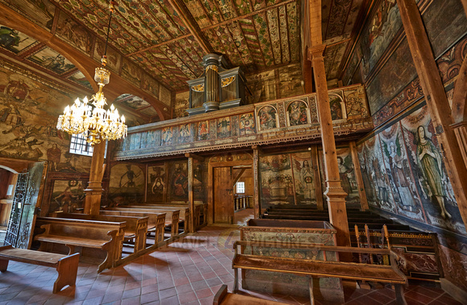

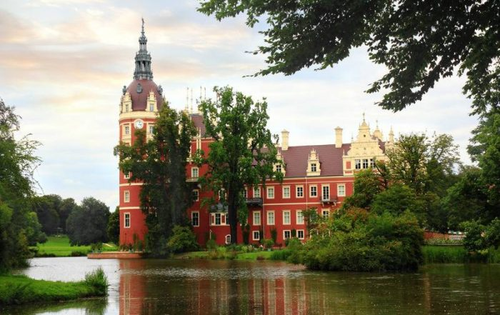

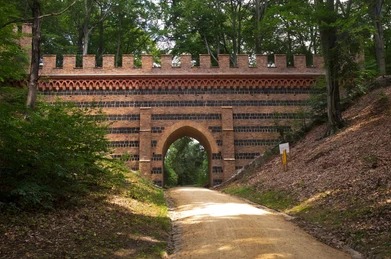


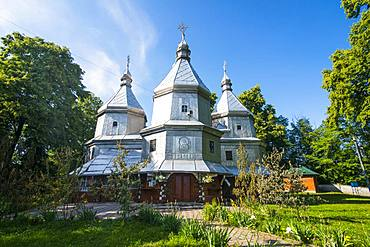







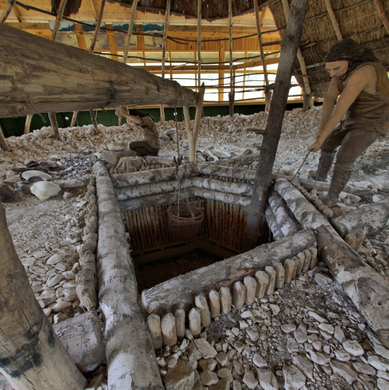


















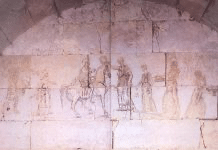








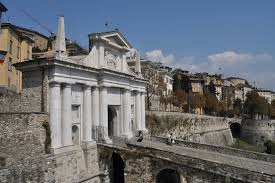

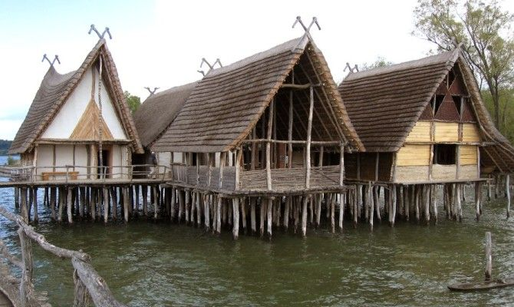



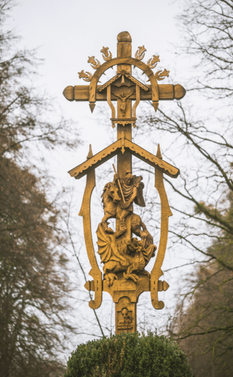


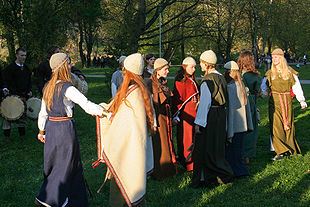



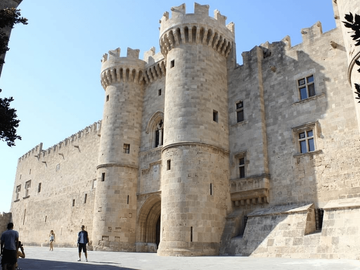

















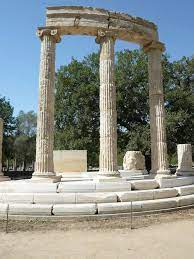






Comments